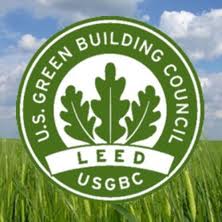
Benefits Of LEED Certification
LEED (Leadership in Energy and Environmental Design) is a rating system for green building. LEED has different rating systems for different types of buildings, customizing the components of the rating system to meet the needs of each type of building project. Third party companies, called energy audit companies, conduct the rating of a building during the LEED certification process. These companies must have a LEED professional credential. There are many benefits of LEED certification. The goal of LEED is to create buildings and dwellings that have higher energy efficiency, safer and healthier living conditions, and to leave the smallest possible imprint on the environment. Designing a building according to LEED specifications can also help you save money over the lifetime of the building.
LEED certification is available in a wide range of applications. There are many rating systems, each for a different type of building, including rating systems for new buildings, existing buildings, homes, schools, healthcare institutions, and retail buildings. Each rating system is designed having the purpose of each building in mind, trying to improve the energy efficiency of the building while maintaining or improving the building’s ability to accomplish its function. For example, the goals of the LEED home rating system are very simple. LEED home certification requires energy efficient home improvements, creating a healthy environment for the occupants while at the same time seeking to improve the comfort and the livability of the home. Each rating system has the same underlying goals with certain provisions for each type of building where needed to maintain the function of the building.
The main benefits of LEED certification are higher energy efficiency, water conservation, and reducing a building’s impact on the environment. All of these goals lead to benefits for the owners and occupants of a LEED certified building. Higher energy efficiency and water conservation not only means a happier environment, it also means lower cost for the owner of the building. For example, a homeowner who seeks LEED certification can expect to have lower utility bills. While the homeowner may have to spend some money upfront to make energy efficient home improvements, the energy and water savings over time will outweigh the initial cost. Other benefits gained by LEED certified building owners and occupants are healthier environments to work and live in, tax rebates in many cities, and cleaner air to breathe.
The process of obtaining LEED certification is described on the LEED website. It involves five steps. The first step is to choose a rating system. (Explanations of each rating system can be found on the LEED website.) Next, you register your project and pay a registration fee. Then, you are ready to apply for LEED certification. This requires that you have your building rated by and energy audit company that has an LEED professional credential. You will also need to fill out some forms and pay another fee. The complete cost of LEED certification depends on the size of the building. When the rating process is complete and your application is submitted, your request is reviewed and a final decision is made. You can always appeal if you do not agree with the decision. Once your building is LEED certified, you can enjoy the lower energy bills and the healthier living and working conditions your building affords.
